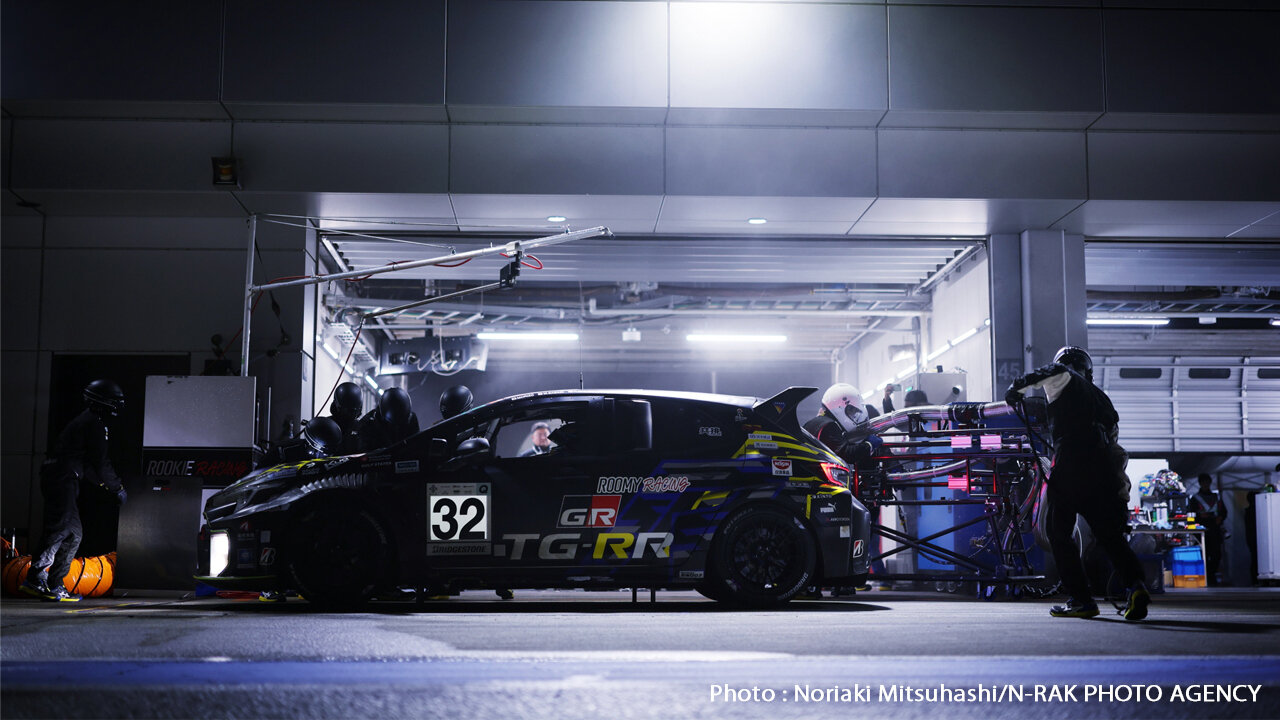
Toyota's liquid hydrogen-fueled Corolla took on the Fuji 24-hour race for its third year. The car is moving ever closer to commercialization.

“I’ve finally been able to race, that’s the kind of year it’s been. I think we’ve made progress again.”
Morizo reflected on the journey so far after crossing the finish line at Round 3 of the 2025 ENEOS Super Taikyu Series Empowered by BRIDGESTONE Fuji 24 Hours race, held from May 31 to June 1.
Taking on the challenge for its third year, in 2025 the liquid hydrogen engine Corolla notched up 468 laps (approx. 2,135 km).
Despite speed restrictions and prolonged interruptions due to factors such as poor weather, the team beat its previous best by 30%, or nearly 500 km in terms of distance.
And although the Corolla runs in the ST-Q class, where competing for rankings is not the goal, it managed to avoid last place for the first time in a Fuji 24-hour race, showing that it can keep pace with gasoline-fueled machines.
Solid progress year to year
The key factors behind the record-breaking run were the pump and tank introduced in last year’s race, which finally showed their full effect.
While the detailed explanation can be found in last year’s article, essentially Toyota’s engineers improved the durability of the pump that delivers liquid hydrogen from the fuel tank. In doing so, they eliminated the need for pump replacements, a task that takes more than three hours and had to be done twice during the 2023 race.
By opting for an elliptical tank, they also boosted the range per hydrogen refuel by 50%.
Unfortunately, during last year’s race, the car was forced to make a nine-hour pit stop due to unrelated electrical problems, which kept it from surpassing its first attempt the previous year.
Spurred on by this disappointment, this year’s race let the team show how far they had come in the past 12 months.
Project General Manager Naoaki Ito, who oversees the hydrogen engine project at the GR Vehicle Development Division, commented on these accomplishments.
Project General Manager Ito

Last year, we faced numerous challenges and were unable to thoroughly assess the capabilities of the pump and elliptical tank.
This time, the drivers were able to maintain racing speeds throughout the 24 hours, pushing the car and the hydrogen system to extremes.
With this, our development takes a leap forward.
First there is the pump, which finished the race without replacement. Of course, we had confirmed that it could last more than 24 hours in bench testing, but we were very nervous and anxious to see how it would perform in an actual car under race conditions.
In addition, the elliptical tanks have boosted the car’s range per refuel, meaning we no longer lose ground through repeated pit stops.
As a result, we were able to finish around the middle of the ST-5 class, and I think we showed that the H2 Corolla can compete with gasoline-powered vehicles.

